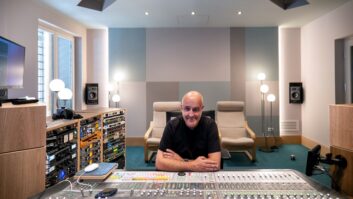We fully expect to receive some letters here at the Mix offices regarding this month’s technology feature on pro iPhone/iPod touch apps. It happens each and every time we write about a shift toward more “down-market” applications and away from the more traditional “high-end” recording techniques or technologies.
Home studios emerged in a big way in the late ’80s and we were taken to task for covering these upstart “project studios.” When ADATs and DA-88s debuted and George Petersen trumpeted their game-changing approach to digital recording, we received letters stating consumer videotape-based media were not worthy of a real commercial studio. Then came emulation plug-ins, which — horror of horrors — couldn’t compete with the real thing. And in the early days, the critics were probably right. Then came freeware, shareware, GarageBand. The list goes on. Now we have the iPhone, and no doubt plenty more Droid apps to come.
Are we advocating that professional recording engineers start tracking, editing or mixing full projects on their smartphones? Not at all. But we do have a responsibility here at Mix to stay on top of what’s happening, and we would be remiss to categorize any breaking technology as worthy or unworthy of a recording professional. Our mission, from the first issue in 1977, has been to report on the tools and techniques that are used to create audio, no matter their price point or their point of origin. That includes high-end analog consoles from the likes of API and SSL, right down to sketchpads for artists in rehearsal halls or on the road as they work out new tracks. If the tool helps an engineer, whether it’s in signal processing or in room design, whether it costs $50k or $0.99, we will report on it.
In a sense, we’re privileged here in the audio industry. We have a user community that embraces tube technology and boutique manufacturers. We have a knowledge base that promotes tried-and-true miking techniques while encouraging radical experimentation with found sounds. We love our dials and knobs, and we support cloud computing and remote collaboration. Most every engineer I’ve met echoes the sentiment: Whatever serves the music; whatever gets the job done.
So if you find yourself in need of checking phase, there’s an app for that. If you are out on the town and need to grab a down-and-dirty 2-channel recording because you’ve never heard a train pass-by quite like that, there’s an app for that. And, of course, if you need to get in a few games of Tetris or Solitaire while waiting for the guitar player to show up, there’s an app for that.
Make no mistake: The paradigm is shifting and mobile apps will be a part of the future. When those much-hyped tablets start popping up this year, don’t be at all surprised if you see one right there beside the API console and the rack full of Pultecs, Fairchilds and UA 1176s. They are all tools.







